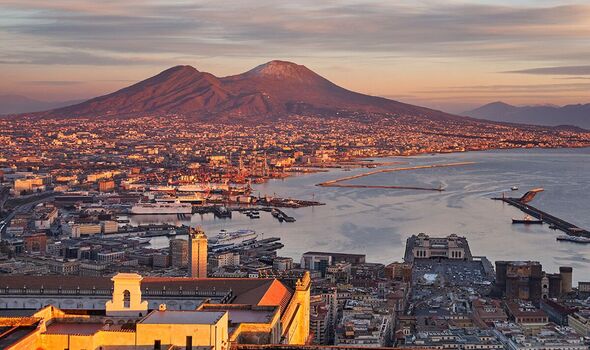The ancient city of Pompeii wowed this week after yet more archaeological treasures were found hidden beneath volcanic ash.
Back in 79 AD, the metropolis was destroyed forever after Mount Vesuvius erupted and sent racing pyroclastic flows down its slopes.
The last time Mount Vesuvius erupted was in 1944, shortly before the end of World War 2, when 26 Italians were killed and almost 12,000 were displaced.
Though the volcano has lain quite still since then, Vesuvius remains an extremely active volcano, with scientists suggesting it is at serious risk of erupting at some point in the future — a matter of when, not if.
It is unclear when this will happen, however, and how many people will be affected, though as many up to a million could be seriously impacted should Vesuvius blow its lid.
Underworld, an educational channel, explored what an impending eruption might look like, and the aftermath that would follow.
In a short documentary exploring potential volcanic blasts around the world, the narrator noted: “Mount Vesuvius could erupt again — and soon.”
Compared to volcanoes around the world, Vesuvius isn’t that big, just 1,281 metres above sea level, though it remains one of the most lethal because of the population density surrounding it.
Around three million Italians call Naples, the city that sits across from Vesuvius, home. Each lives close enough to be affected by an eruption, and half a million people live even closer in what is known as the “danger zone”.
This zone makes Vesuvius the most densely populated volcanic region in the entire world.
Concerned about a potential eruption, the Italian government in recent years has begun moving people away from the danger zone by slowly creating a national park around it.
No one will be allowed to live within the park’s boundaries, and residents are being offered around $40,000 (£30,000) per person to leave and set up shop elsewhere.
The aim is to get the area around Vesuvius so sparsely populated that an evacuation effort would only take a matter of days.
Recent studies, however, have offered hope. One suggested that an eruption at Vesuvius may not happen for another few hundred years.
Here, researchers took a closer look at the volcano’s four largest eruptions over the last 10,000 years, the “worst case scenario” being that seen at Pompeii
Evidence found and seismic surveys indicate that Vesuvius may well be taking an extended break.
Since 1631, Vesuvius has been producing something known as mafic magma, a type of magma that contains lower amounts of silica and is generally less viscous and less gas-rich than silicic magma.
Olivier Bachmann, professor at ETH Zurich, said this was largely a good sign, telling Futurity: “That’s why we think it’s more likely that a large, explosive eruption of Vesuvius would occur only after a quiescent period lasting for centuries.”
